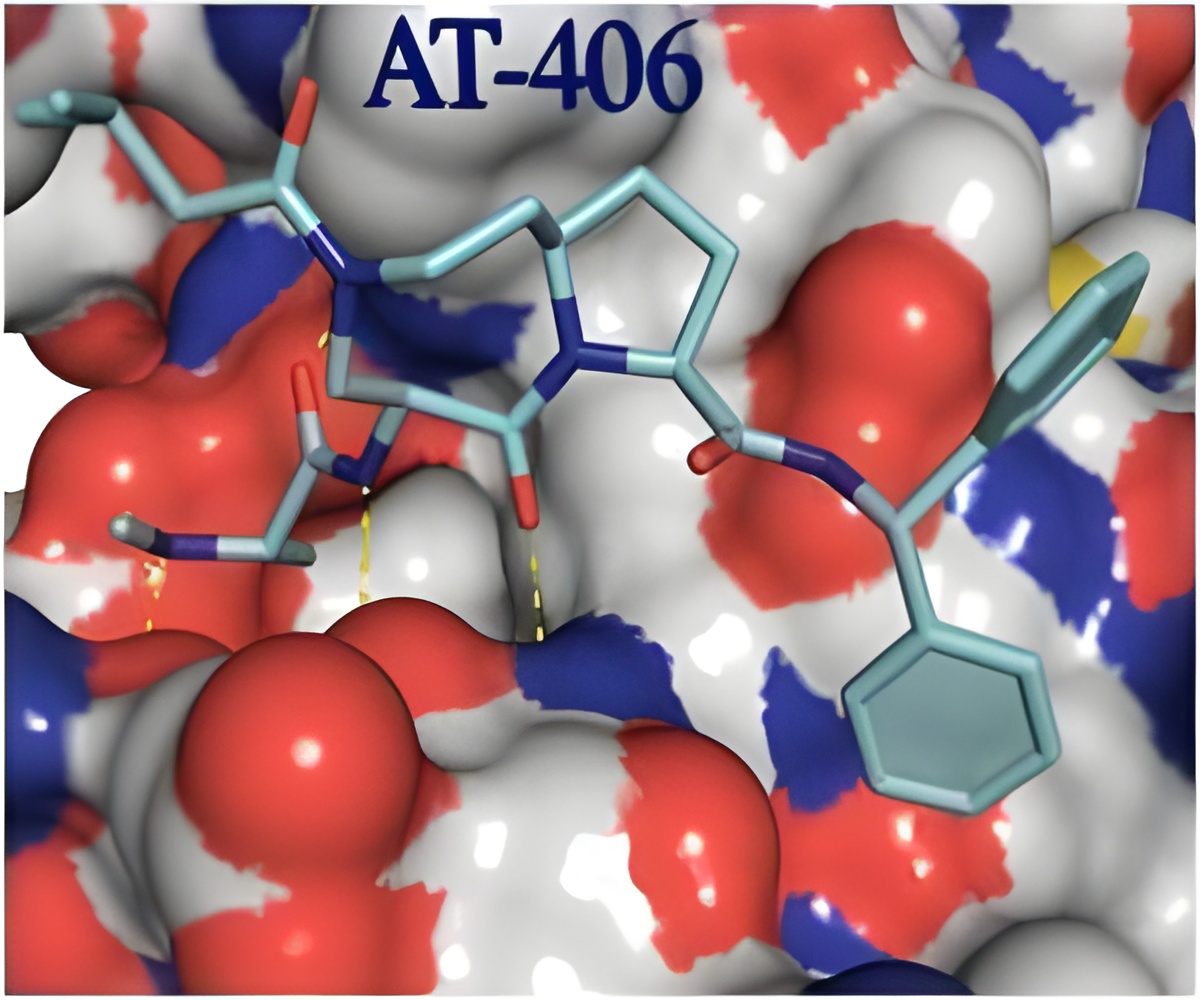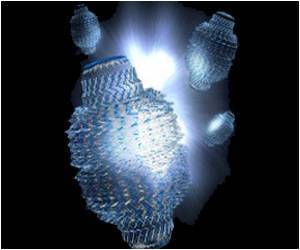
Inspiration for this new strategy came from biological systems that use shape to alter the ability of something to lock in place or slip away and escape, said Nathan Gianneschi, a professor of chemistry and biochemistry, who led the project.
"We wanted to come up with a new approach," Gianneschi said. "Specifically, we wanted to design switchable materials that we could inject in one shape and have them change to another between the blood and tumors."
Some cancerous tissues produce high levels of a class of molecules called MMPs, for matrix metalloproteinases. These enzymes change how other proteins behave by altering their molecular configuration, leading to metastasis. Gianneschi and colleagues harnessed this ability to alter their nanoparticles in ways that would cause them to linger at the site of the tumor.
"We figured out how to make an autonomous material that could sense its environment and change accordingly," Gianneschi said.
Each nanoparticle is made of many detergent-like molecules with one end that mixes readily with water and another that repels it. In solution, they self assemble into balls with the water-repellant ends inside, and in that configuration can easily be injected into a vein.
Advertisement
The team tested the concept further by injecting their new nanoparticles into mice with human fibrosarcomas, a kind of cancer that produces high levels of MMPs.
Advertisement
Within a day they detected FRET signals indicating that the spheres had reassembled at the sites of the tumors, and the signal persisted for at least a week.
The treatment is not inherently toxic. It did not appear to change the tumors in any way, and liver and kidney, the organs most vulnerable to collateral damage from treatments because they clear toxins from the body, were normal and healthy eight days after injection.
Different versions of these nanoparticles could be designed to respond to signals inherent to other types of cancers and inflamed tissue, the authors say. The spheres can also be engineered to carry drugs, or different diagnostic probes.
Right now, this same team is developing nanoparticles that carry an infrared dye, which would enable them to visualize tumors deeper inside the body along with other materials that can be imaged with instruments commonly available in the clinic.
Source-Eurekalert







